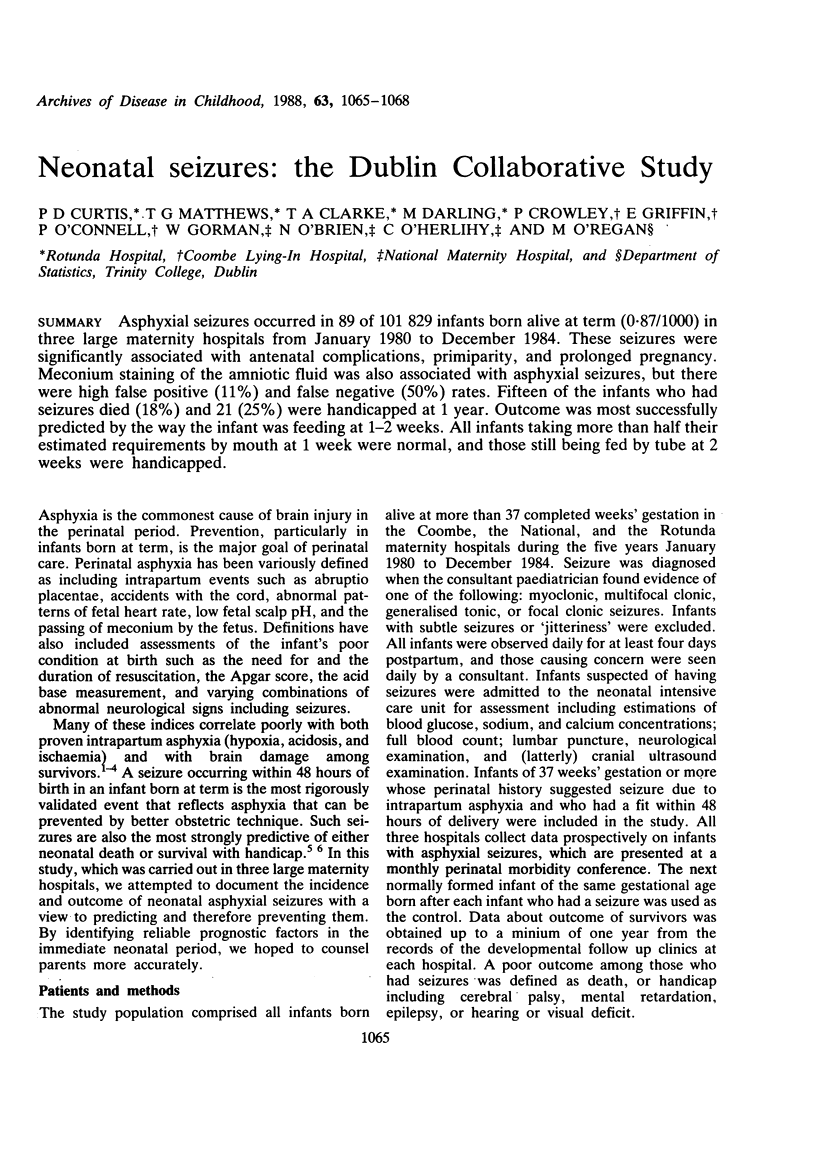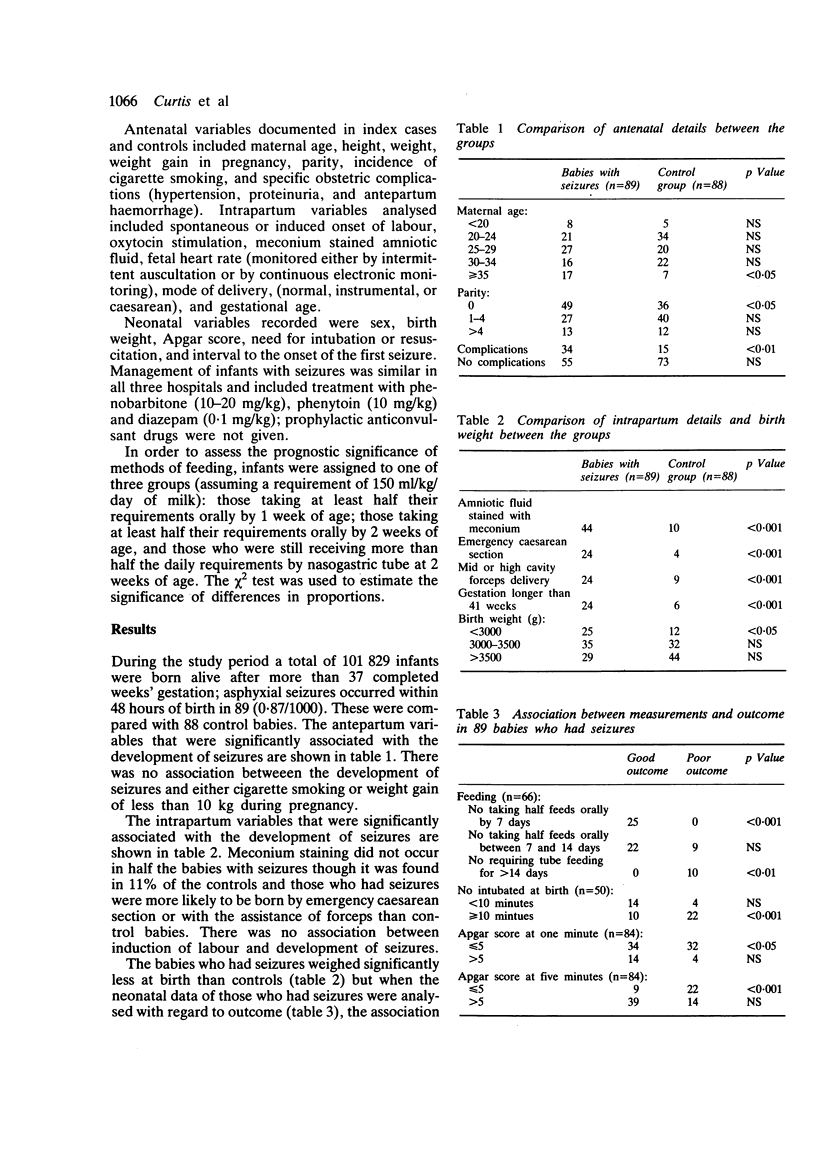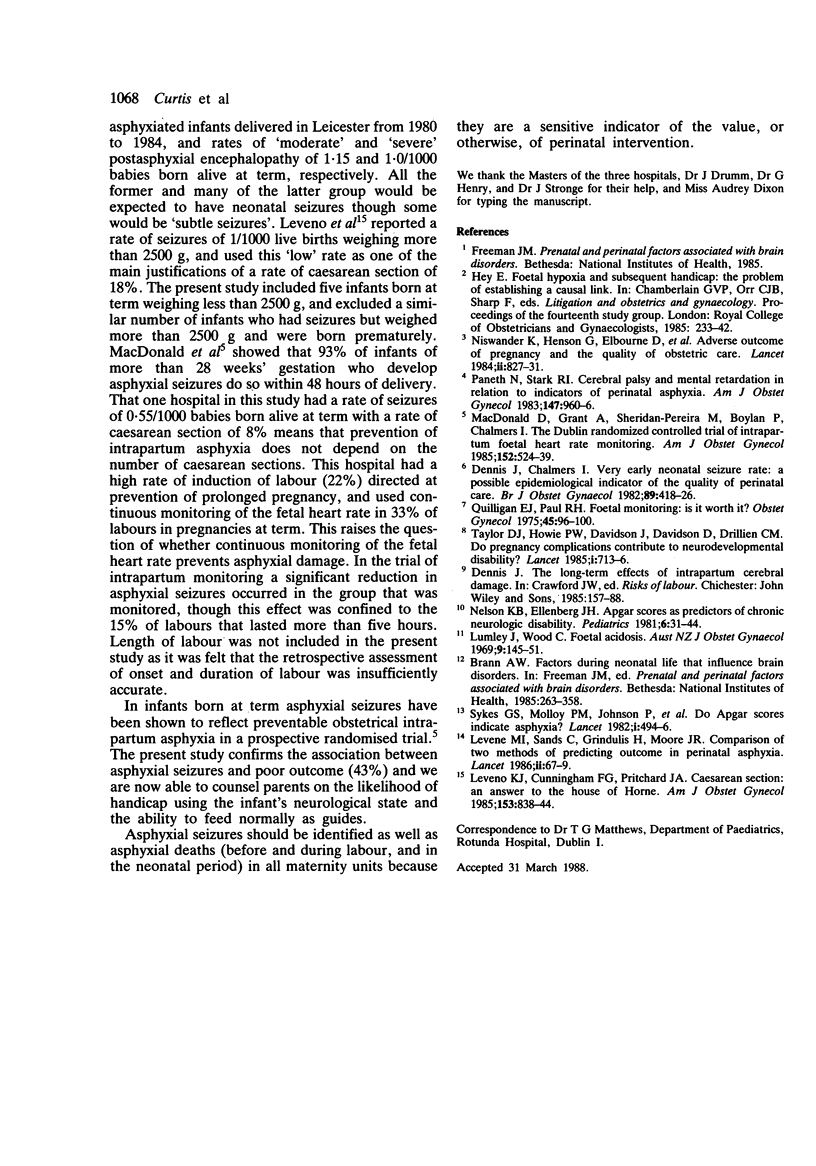Abstract
Asphyxial seizures occurred in 89 of 101,829 infants born alive at term (0.87/1000) in three large maternity hospitals from January 1980 to December 1984. These seizures were significantly associated with antenatal complications, primiparity, and prolonged pregnancy. Meconium staining of the amniotic fluid was also associated with asphyxial seizures, but there were high false positive (11%) and false negative (50%) rates. Fifteen of the infants who had seizures died (18%) and 21 (25%) were handicapped at 1 year. Outcome was most successfully predicted by the way the infant was feeding at 1-2 weeks. All infants taking more than half their estimated requirements by mouth at 1 week were normal, and those still being fed by tube at 2 weeks were handicapped.
Full text
PDF



Selected References
These references are in PubMed. This may not be the complete list of references from this article.
- Dennis J., Chalmers I. Very early neonatal seizure rate: a possible epidemiological indicator of the quality of perinatal care. Br J Obstet Gynaecol. 1982 Jun;89(6):418–426. doi: 10.1111/j.1471-0528.1982.tb03630.x. [DOI] [PubMed] [Google Scholar]
- Levene M. I., Sands C., Grindulis H., Moore J. R. Comparison of two methods of predicting outcome in perinatal asphyxia. Lancet. 1986 Jan 11;1(8472):67–69. doi: 10.1016/s0140-6736(86)90718-x. [DOI] [PubMed] [Google Scholar]
- Leveno K. J., Cunningham F. G., Pritchard J. A. Cesarean section: an answer to the House of Horne. Am J Obstet Gynecol. 1985 Dec 15;153(8):838–844. doi: 10.1016/0002-9378(85)90686-6. [DOI] [PubMed] [Google Scholar]
- MacDonald D., Grant A., Sheridan-Pereira M., Boylan P., Chalmers I. The Dublin randomized controlled trial of intrapartum fetal heart rate monitoring. Am J Obstet Gynecol. 1985 Jul 1;152(5):524–539. doi: 10.1016/0002-9378(85)90619-2. [DOI] [PubMed] [Google Scholar]
- Niswander K., Henson G., Elbourne D., Chalmers I., Redman C., Macfarlane A., Tizard P. Adverse outcome of pregnancy and the quality of obstetric care. Lancet. 1984 Oct 13;2(8407):827–831. doi: 10.1016/s0140-6736(84)90871-7. [DOI] [PubMed] [Google Scholar]
- Paneth N., Stark R. I. Cerebral palsy and mental retardation in relation to indicators of perinatal asphyxia. An epidemiologic overview. Am J Obstet Gynecol. 1983 Dec 15;147(8):960–966. doi: 10.1016/0002-9378(83)90254-5. [DOI] [PubMed] [Google Scholar]
- Quilligan E. J., Paul R. H. Fetal monitoring: is it worth it? Obstet Gynecol. 1975 Jan;45(1):96–100. [PubMed] [Google Scholar]
- Sykes G. S., Molloy P. M., Johnson P., Gu W., Ashworth F., Stirrat G. M., Turnbull A. C. Do Apgar scores indicate asphyxia? Lancet. 1982 Feb 27;1(8270):494–496. doi: 10.1016/s0140-6736(82)91462-3. [DOI] [PubMed] [Google Scholar]
- Taylor D. J., Howie P. W., Davidson J., Davidson D., Drillien C. M. Do pregnancy complications contribute to neurodevelopmental disability? Lancet. 1985 Mar 30;1(8431):713–716. doi: 10.1016/s0140-6736(85)91261-9. [DOI] [PubMed] [Google Scholar]


